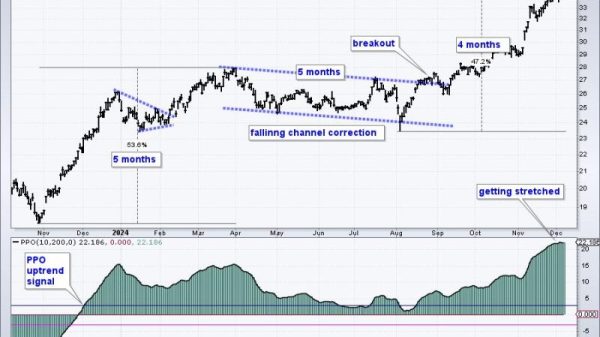In the world of trading and investing, having a solid entry strategy is crucial for success. One popular technique that many traders use is based on moving averages, particularly the 50-day moving average. By understanding and effectively utilizing this indicator, traders can improve their chances of making profitable trades. In this article, we will delve into the details of how to implement a powerful entry strategy using the 50-day moving average.
Setting Up the Moving Average: The first step in implementing this strategy is to set up a 50-day moving average on the price chart of the asset you are interested in trading. The moving average is calculated by averaging the closing prices of the asset over the past 50 days. This moving average line will then move along with the price chart, providing a visual representation of the average price over the specified time period.
Identifying the Trend: One of the key uses of the 50-day moving average is to identify the trend of the asset. When the price is above the 50-day moving average, it is generally considered to be in an uptrend, indicating potential bullish momentum. Conversely, when the price is below the moving average, it suggests a downtrend with potential bearish momentum. Traders can use this information to align their trades with the prevailing trend direction.
Entry Signals: The 50-day moving average can also act as a signal for entry points in trades. When the price crosses above the moving average from below, it is known as a golden cross, signaling a potential uptrend and a buy opportunity. On the other hand, when the price crosses below the moving average from above, it is called a death cross, indicating a potential downtrend and a sell opportunity. Traders can use these crossover signals to enter trades in the direction of the trend.
Risk Management: In addition to using the 50-day moving average for entry signals, traders should also incorporate proper risk management techniques into their trading strategy. Setting stop-loss orders below the recent swing low or using trailing stops can help protect profits and limit potential losses. By combining the moving average signals with effective risk management strategies, traders can optimize their trading performance.
Monitoring and Adjusting: It is essential for traders to continuously monitor their trades and adjust their strategies as needed. Market conditions can change rapidly, and what was once a profitable setup may no longer be ideal. Regularly reviewing the charts, analyzing the price action, and adapting to new developments in the market can help traders stay ahead and capitalize on opportunities.
In conclusion, the 50-day moving average can be a powerful tool for traders looking to improve their entry strategy. By setting up the moving average, identifying trends, using entry signals, implementing risk management, and monitoring trades, traders can enhance their decision-making process and increase their chances of success in the markets. Incorporating the 50-day moving average into your trading arsenal can provide a structured approach to trading that is based on sound technical analysis principles.


























